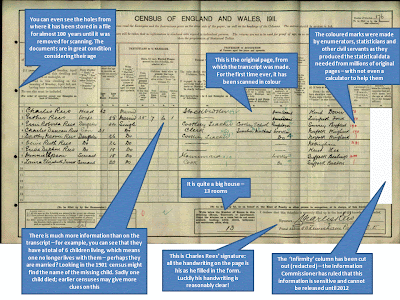
Great news for amateur genealogists. The UK 1911 census records have been put online here. The website says that the records for the Channel Islands and ISLE OF MAN are coming soon. Very soon, I hope. But if, like me you have some non-Manx yet British blood it might be interesting to see where your ancestors were nearly 100 years ago on a Spring night in April. (I am interested in the suffragette movement issue as I suspect it wasn’t an issue in the IOM as women could vote by then.)
The 1911 census
The 1911 census for England and Wales was taken on the night of Sunday 2 April, 1911. The count included all individual households, plus institutions such as prisons, workhouses, naval vessels and merchant vessels, and it also attempted to make an approximate count of the homeless.
The 1911 census recorded the following information:
- Where an individual lived
- Their age at the time of the census
- Who (what relatives) they were living with
- Their place of birth
- Occupation
Also, depending on an individual’s circumstances, additional information could include:
- Who their guests were on the night of the census
- The number of servants they had (if any)
- Whether they were an employee or employer
- Details of nationality
- Duration of current marriage
In response to government concerns the 1911 census also asked additional, more specific questions to each household, about fertility in marriage and occupational data. Many of the questions are ansered in your ancestor’s own hand.
The 1911 census and the suffragettes
Frustrated with the government’s refusal to grant women the vote, a large number of women boycotted the 1911 census by refusing to be counted. There were two forms of protest. In the first, the women (or their husband) refused to fill in the form, often recording their protest to the enumerator. In the second, women evaded the census by staying away from their home for the whole night. In both cases, any details relating to individual women in the households will be missing from the census. For the family historian the active refusal to fill in the form (accompanied by a protest statement) at least registers the presence of a woman/women in the household, whereas the women who evaded the count are simply untraceable via the census.
The exact number of women who boycotted the census is not known, though some people have estimated that it may be as many as several thousand.

